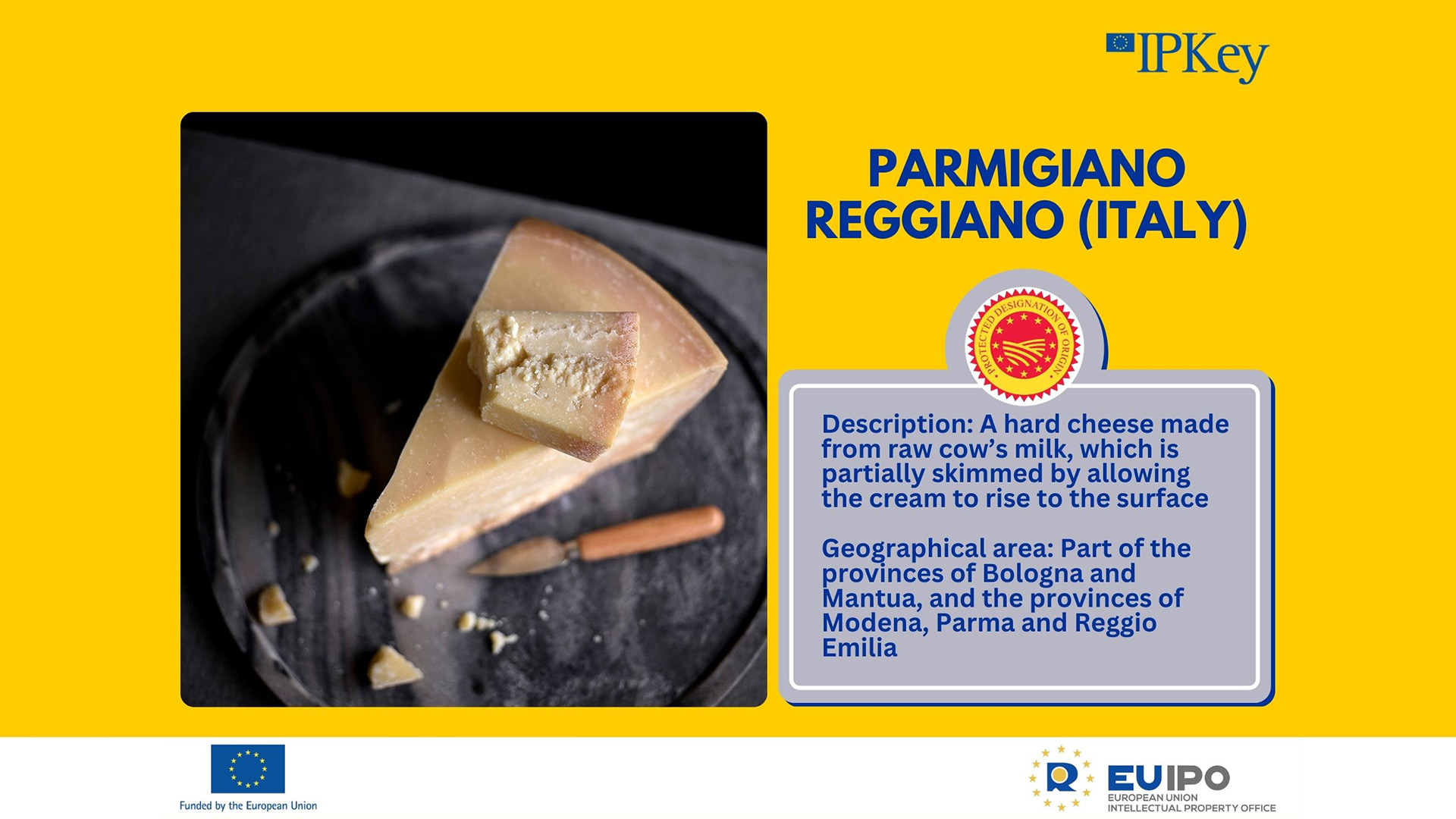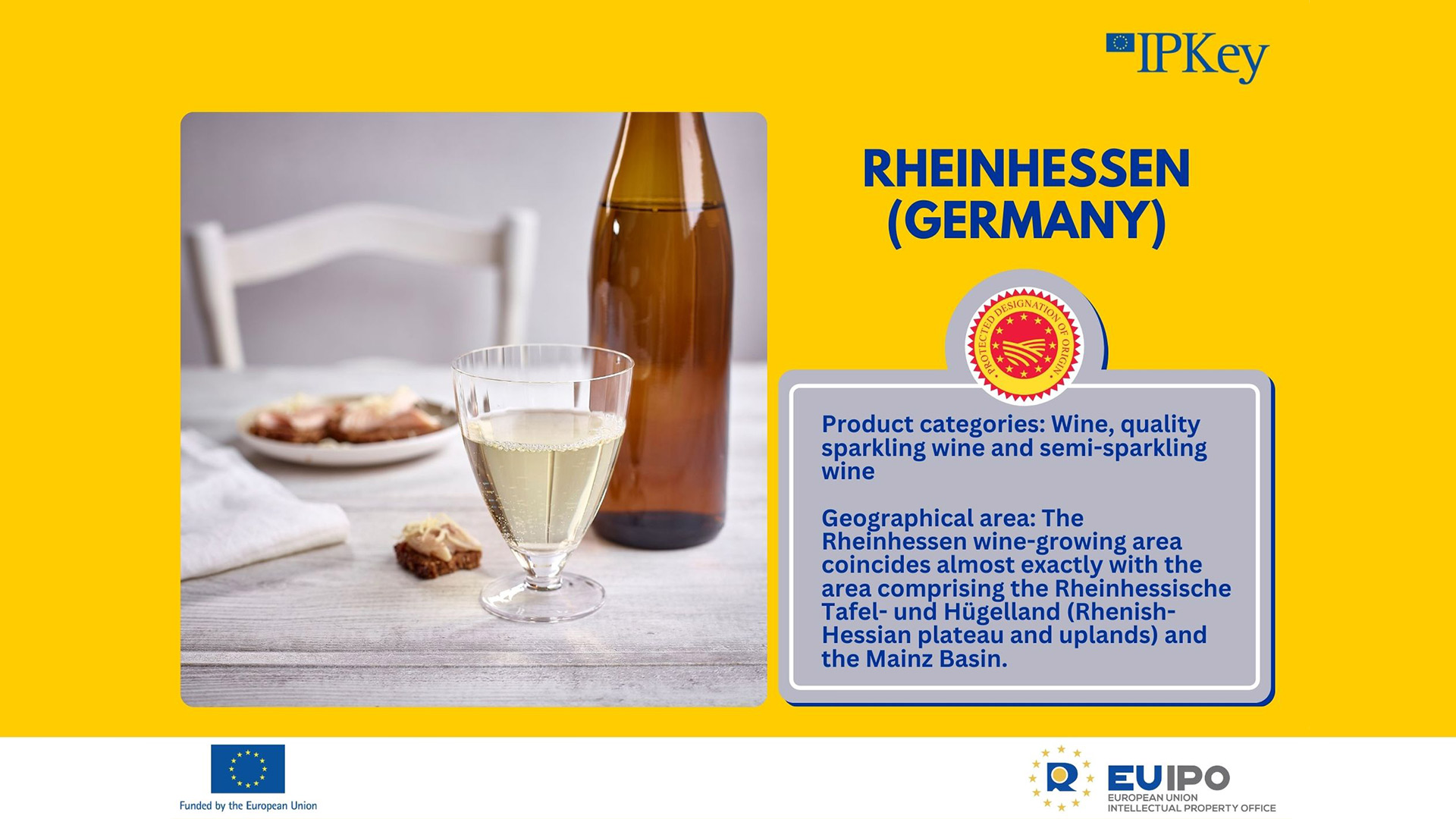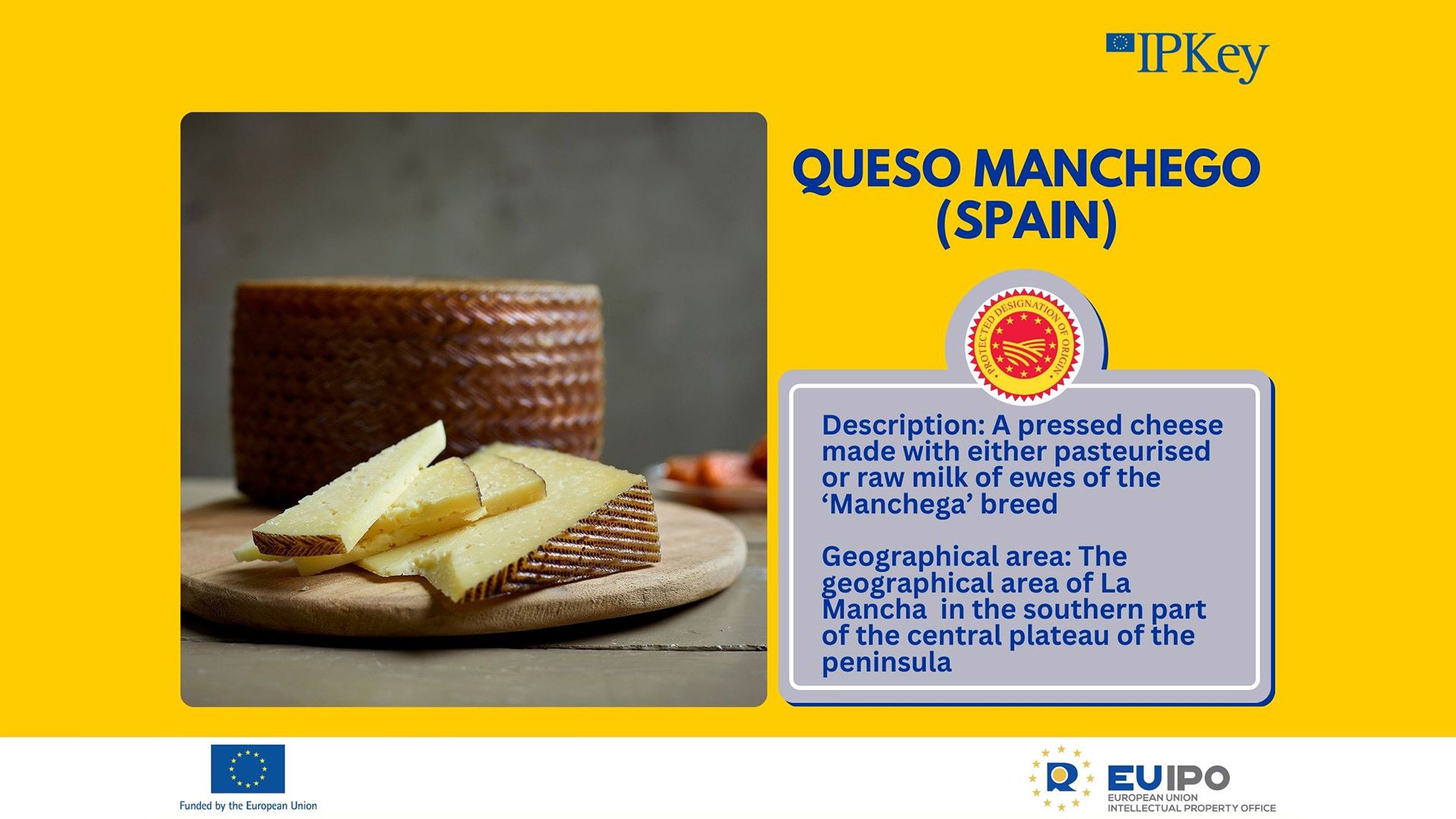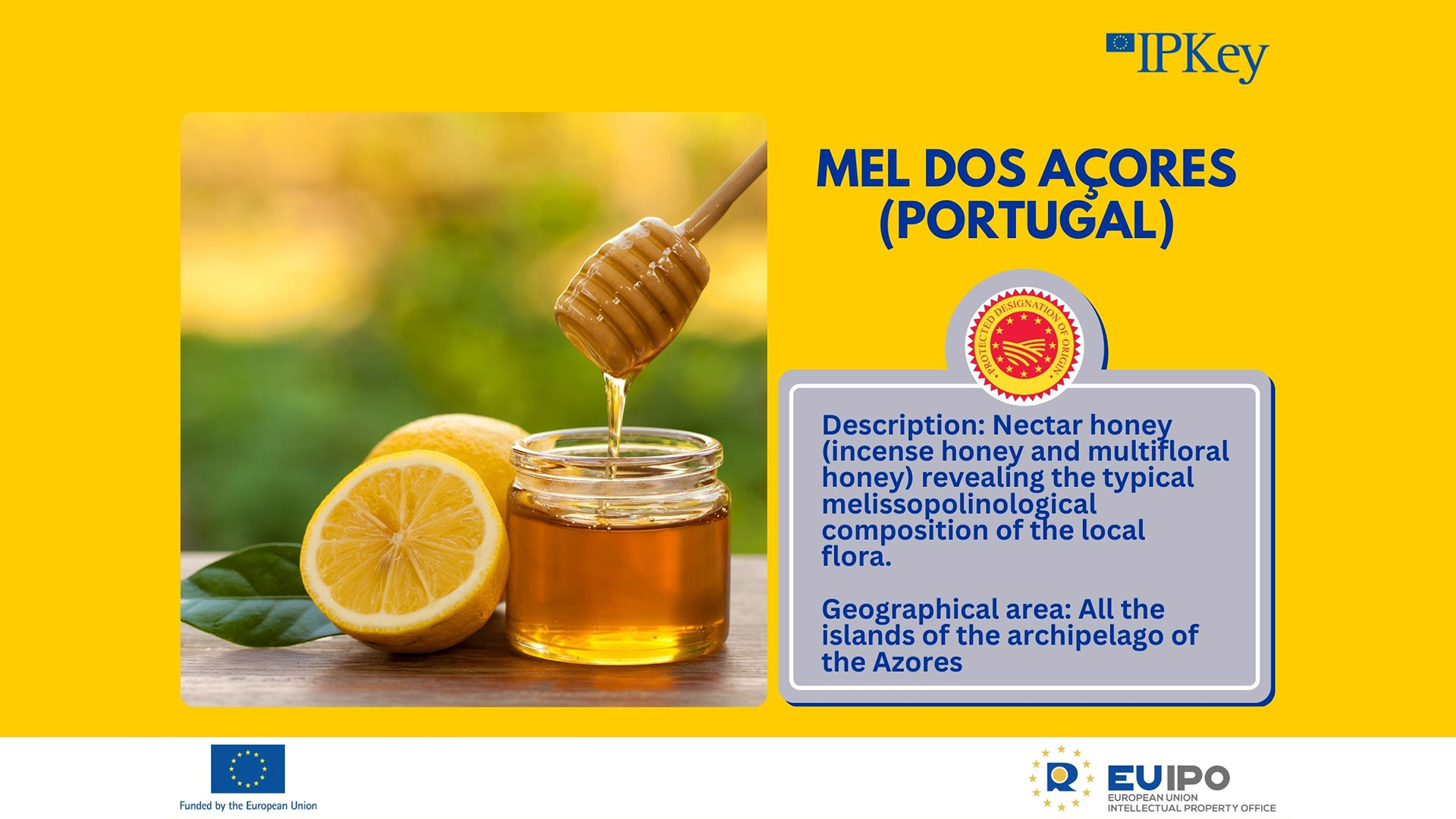Discovering European Heritage through Geographical Indications
The European Union Intellectual Property Office (EUIPO), responsible for craft and industrial geographical indications (GIs) in the EU and an international registration authority for GIs, has been actively involved in the legal aspects of GIs since 2018 and maintains GIview, the most comprehensive searchable database for GIs, which will soon include craft and industrial products.
The EUIPO’s key efforts in the area of GIs include expanding GI knowledge and promoting the GI system through regional projects including IP Key South-East Asia. In this article, we introduce you to four EU GIs, highlighting the connection between food and places that makes visiting Europe an intriguing experience.

Parmigiano Reggiano: Italy’s Iconic Cheese
Parmigiano Reggiano cheese is among the Italian GIs popular in South-East Asia. The story of Parmigiano Reggiano dates to the Middle Ages when Benedictine and Cistercian monks sought to create a cheese that could endure the test of time. Historical records from 1254 in Genoa show Parmigiano Reggiano’s early trade, indicating its widespread recognition. Its origins lie in the provinces of Parma, Reggio Emilia, Modena and parts of Bologna and Mantua, which are also popular tourist destinations.
The production of Parmigiano Reggiano is a testament to the art of cheesemaking. The journey begins with raw milk sourced from cows fed primarily on local fodder. This milk, untainted by any heat treatment, undergoes a precise process of daily milk processing, copper vat coagulation and brining. The cheese matures for at least 12 months under specific climatic conditions, developing its unique characteristics: a fine-grained, flaky texture and a fragrant, delicate aroma. The cheese also provides essential nutrients such as calcium and phosphorus and is naturally lactose-free.
Parmigiano Reggiano offers more than just taste; it’s an experience. People from all over the world are drawn to the area to take part in tours, visits to dairies, tasting sessions and festivals, all dedicated to celebrating this iconic cheese. According to the Consorzio del Formaggio Parmigiano Reggiano, the consortium responsible for protecting and promoting the cheese and ensuring its strict production regulations, in 2023 around 180 000 visitors took part in tours to the dairies to observe the entire production process and taste the cheese at different stages of maturation. This immersive approach enhances the tours by giving visitors a deeper understanding and appreciation of Parmigiano Reggiano.

Rheinhessen: A Storied Vineyard
Rheinhessen, Germany’s largest wine-growing region, spans over 27 000 hectares. The region’s winemaking heritage dates back 2 000 years, making it a cornerstone of German viticulture. Renowned for its diverse soils and favourable climate, Rheinhessen produces many grapevine products, including wine, quality sparkling wine and semi-sparkling wine. While white wines dominate, the region also produces notable rosé and red wines. Rheinhessen GI wines often have primary aromas of yellow and tropical fruits, and sometimes floral nutmeg notes. They are typically pale to straw yellow, with a balanced sweetness and acidity.
The wine-growing region of Rheinhessen is boosting the local economy with a growing number of young producers determined to sustain their sector. Rheinhessen hills are dotted with beautiful vineyards, making it ideal for an active or a very indulgent holiday. Hiking trails and cycling routes offer visitors a unique experience to explore the vineyards while wineries offer a variety of wine tasting tours, sharing insights into one of Germany’s finest wines.

Queso Manchego: Spain’s Legendary Cheese
Queso Manchego is one of the most iconic cheeses in the world, originating from the plains of La Mancha, Spain. Maybe the name ‘La Mancha’ sounds familiar to you. It is the birthplace of a famous fictional character in Spanish literature: Don Quixote. This GI cheese from La Mancha is as legendary as the heroic figure.
Queso Manchego is made exclusively from Manchega sheep’s milk, a breed well adapted to the often harsh conditions of the region. The sheep’s diet, based on the local flora, influences the milk, which is then turned into cheese using traditional methods. The cheese matures for at least 30 days but can be matured for up to two years, developing a rich and complex flavour over time. Queso Manchego is characterised by its firm, compact texture and ivory-yellow colour. Its distinctive taste and texture make it a versatile cheese, suitable for both traditional Spanish dishes and modern cuisine.
Queso Manchego plays a crucial role in local culture and economy. Guided tours to farms and cheese dairies in the area are available to tourists and cheese enthusiasts worldwide.

Mel dos Açores: The Essence of the Azores
The Azores archipelago, with its lush landscapes and temperate climate, is home to a unique product that captures the essence of its natural beauty: Mel dos Açores. Produced from the nectar of the diverse local flora, this honey is a fine example of the region’s biodiversity and traditional beekeeping practices.
Mel dos Açores comes in two distinct varieties: the pale and sweet Pittosporum honey from Pittosporum undulatum, and the rich, varied multifloral honey from a blend of nectars from various flowers. Produced exclusively in the Azores archipelago, Mel dos Açores benefits from the region’s unique environmental conditions. It is subject to rigorous quality controls to ensure the honey remains pure and to prevent fermentation.
The archipelago’s fertile soils and the temperate oceanic climate favour the natural growth of Pittosporum undulatum and a rich, varied melliferous flora that includes eucalyptus, pohutukawa, chestnut, clover, and brambles, which are highly attractive to pollinators.
The production of Mel dos Açores not only supports local biodiversity and eco-friendly practices but also sustains local livelihoods and preserves cultural heritage. The honey is integral to local culinary traditions and festivals, reflecting the islanders’ way of life and deep connection to their environment.
A Blueprint for Growth
GIs have proven to be a powerful economic stimulus. According to a report published in 2020, they represented a sales value of EUR 74.76 billion in the European Union. Moreover, areas renowned for their GIs often attract tourists seeking authentic experiences such as festivals and tours, boosting local businesses and the hospitality sector.
For travellers craving more than the usual tourist sites, exploring GIs can turn a journey into a multi-sensory experience. And if you’re thinking of visiting Europe, why not consider Rheinhessen, La Mancha, Parma or the Azores archipelago for a unique travel experience with a taste of their exquisite GI products.